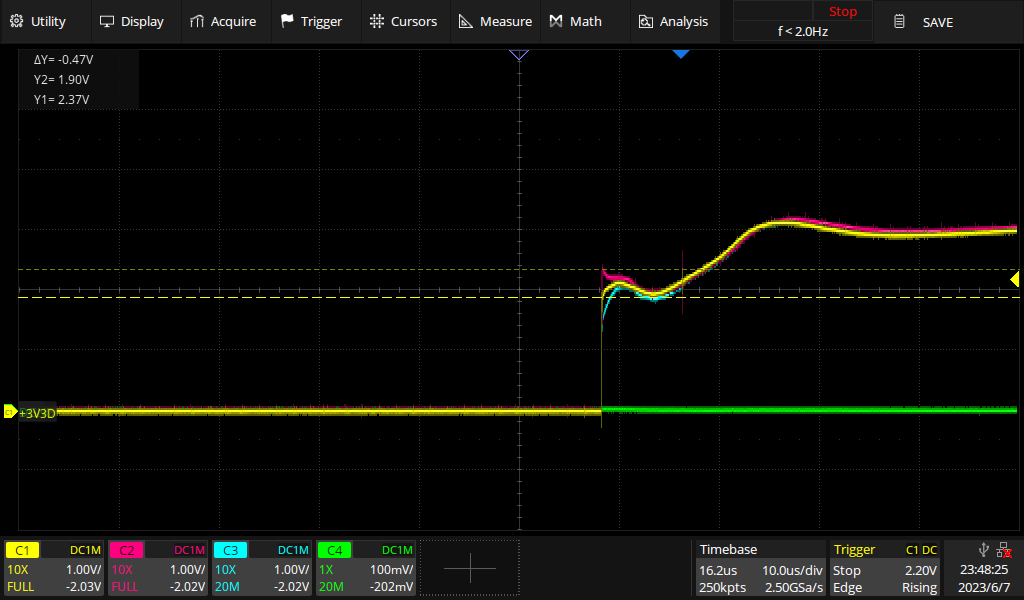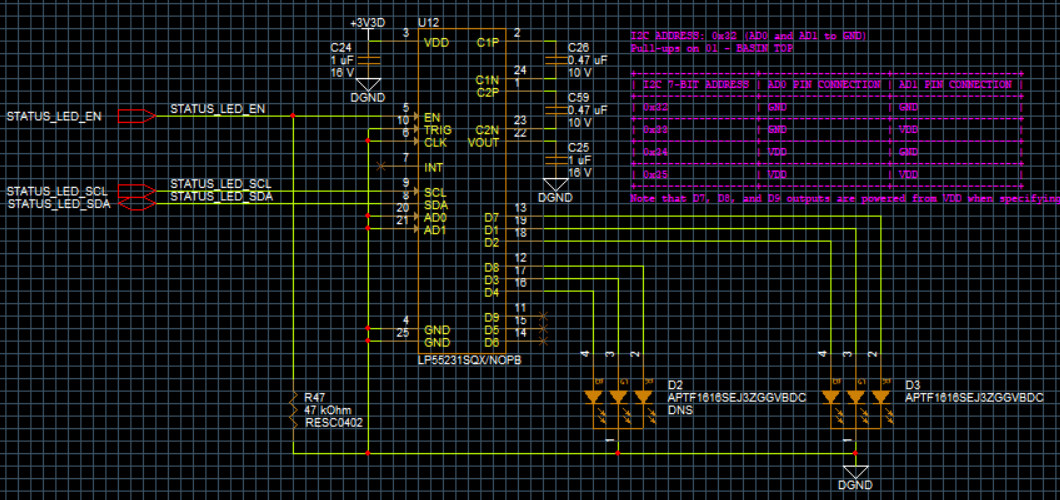Other Parts Discussed in Thread: LP5009
Hi all,
We've been experiencing an issue with LP55231 chips, on at least 5% of boards now. In two instances, SCL has been found shorted to GND. In another instance, SDA and SCL were found shorted to VCC. In all instances, these shorts were resolved by desoldering the LP55231 package from the boards. These shorts occurred after hours of normal operation, so unlikely to be solder bridging. We would be interested in hearing whether other customers have experienced similar issues, and/or whether there are some suggested mitigation techniques that could prevent these pins from shorting internally.
The cause of the shorts is still unknown. An oscilloscope capture upon normal power-up shows VCC (channel 1, yellow), SDA (channel 2, magenta), SCL (channel 3, cyan), and GND (channel 4, green). There is about 0.4V overshoot on the SDA line above VCC.

In the datasheet, there are no absolute maximum ratings listed for EN/SCL/SDA pins, although the recommended maximum rating for logic I/O is listed as 0V to VCC. For D1-D9, the absolute maximum rating is -0.3V to VCC+0.3V. What is the absolute maximum rating for EN/SCL/SDA pins? What would happen if we exceeded those absolute maximum ratings?
Thank you!


